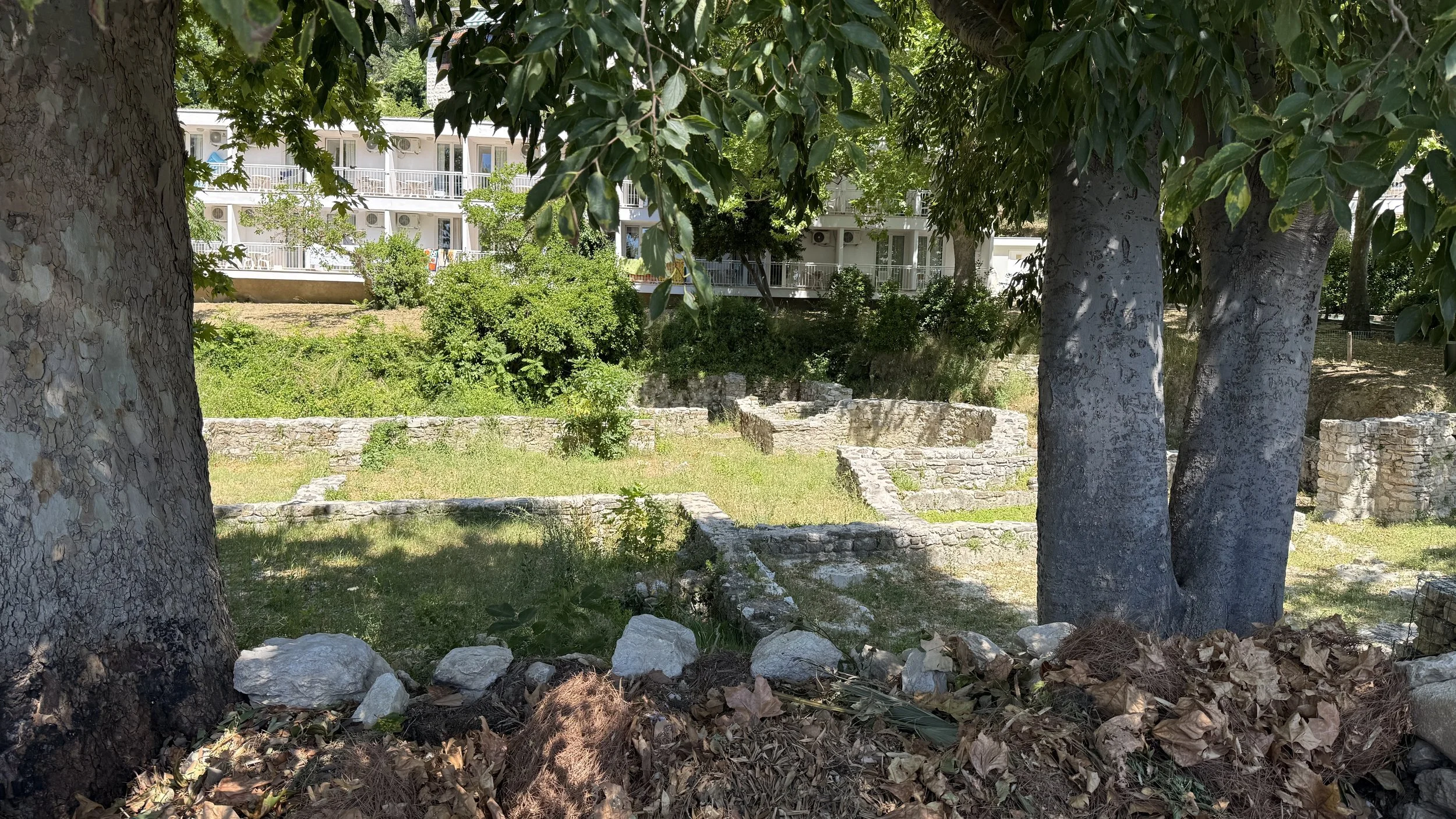Day 70 - July 19th: On The Line
Kaštel Stari to Pisak: 34.3 miles / 1,960 total
Yesterday and the comments echoed a theme that’s become central to this journey: the kindness of strangers, the promise of youth, and the quiet hope that a better future is still out there. It’s one of the deepest truths I’ve uncovered mile by mile.
Yesterday’s epic mountain solitude gave way to a rude awakening—running on the shoulder of Ivana Pavla II, a busy highway leading into Split. Christina had barely saw me in time to dive into a turnout where she extracted me from the nightmare. We both really wanted to spend a night in Split, even if it meant a 40-minute drive in.
By the time we arrived, unpacked, plugged in devices, showered, washed my pack and hat, it was 7 PM. No time for real rest. We went straight out into the old town, starving. We found Ciri Biri Bela, tucked into a charming stone courtyard covered in plants. The vibe was relaxed, the food as good as the 4.8 on Google—maybe better. I inhaled everything. That spot’s a must if you’re ever in Split.
Split is like a supercharged version of Šibenik—lively, vibrant, historic. Walking back to the hotel, the old town buzzed with energy. We got back around 8:30 and lights were out by 10 after I finished my blog entry.
With the decision made to push to Dubrovnik in four days at 55K per day, we knew time management had to be tight. Breakfast at 6:30, hotel departure by 7, and I was back on the highway by 7:30.
Thirteen kilometers of edge-running, hugging the white line and darting between grass and guard rails. A few pedestrian sections broke it up, but mostly it was stay-alert mode.
Just before my turnoff, I spotted ancient stonework beyond the guardrail. I jumped it to investigate—and found myself face to face with the Ruins of Salona, once the capital of the Roman province of Dalmatia. At its height in the 3rd century AD, Salona had more than 60,000 inhabitants, with an amphitheater, temples, baths, and city walls. Diocletian himself, who would later build his famous palace in Split, was born nearby. Standing there on the roadside with trucks rumbling past and centuries-old stones underfoot felt surreal.
After leaving the highway, I wound through hot, exposed roads—first near a landfill, the heat and smell brutal—then across a valley and up over the final hill. At the summit, the Adriatic unfolded in full turquoise glory. Unlike the rugged and remote coast up north, this stretch felt like Croatia’s Jersey Shore—wall-to-wall cars, seaside towns stacked like dominoes, restaurants and markets in every one.
But sidewalks were scarce. Everyone walked in the road. I decided to run with traffic, hugging the guardrail and soaking up the breeze off the sea.
By 30K, I realized there’d be no second wind today. Yesterday’s mountain run had left its mark. Every kilometer was an effort to spark my 3 minute run per kilometer.
Two towns really stood out. First, Dalmacija just outside Split, and later Omiš-Priko, which looked like Rio de Janeiro’s little cousin—massive stone cliffs diving into a curved bay, vibrant and dramatic.
Just past it, I ran along a tree-lined beach road and spotted more Roman ruins built into the slope beside the water.
Across the sea, I noticed a stark white quarry on the island of Brač. I looked it up—this is Pučišća, home to a famous white limestone that’s been quarried since Roman times. Its stone was used in Diocletian’s Palace in Split, the Cathedral of St. James in Šibenik, and allegedly even in the White House in Washington, D.C.
At kilometer 46, in Lokva Rogoznica, I pulled into a turnout where cars were parked for beach access. A plain blue station wagon rolled up. A man rolled down the window and started speaking Croatian. “English?” I asked. “Police, I need to see your passport.” I asked to see his badge and he had it ready - it looked official to me. I told him I don’t carry my passport with me and that I am running across Europe. “Are you driving or biking?” He asked trying to figure out what I meant. “Running and I have someone with me in a car who has my passport” I told him. He motioned to get in the car so we could go to Christina and my passport. “I can’t do that officer,” I told him. And then, “I have a US license would that work?” I got it out of my pack, I was too tired to be nervous or worried. He looked at it as he took out his notebook and then just handed back to me and told me to be careful on the roads. No pushing my luck with him so I didn’t ask for a photo. And thankfully, no Midnight Express today.
Our endpoint was Pisak, but I didn’t realize it was well off the direct path to Dubrovnik. The final stretch took me down a steep off-road trail through recently burned forest, 500 feet down to the beach. The fires had swept through just 25 days earlier. The scent of charred pine mixed with the salt air and the green of still-living trees—it was intoxicating. Stark. Beautiful.
The trail ended in town, but Christina was waiting at the top, so back up I climbed via the stairs this time. All worth it.
We wrapped the day at a mountaintop apartment by 5:30—plenty of time for recovery so we can do it all again tomorrow.
Thanks for following along, and for the support.
Cheers,
David.
P.S. I tossed the defective Altras after 230 miles and started fresh with a new pair. Blisters: resolved.









